I think I am not exaggerating if I say that the Aqueduct of Segovia It is one of the most impressive monuments from the Roman era that we can see today in the world.
Of course it is considered the most important work of the Romans currently in Spain.
And although we all have in our minds the image of this famous aqueduct, when you have the opportunity to see it live on a visit to Segovia, and even more so if it is the first time, its majesty never ceases to surprise you.
From afar the Aqueduct of Segovia It already seems impressive to you, but when you walk under its arches, it is difficult not to be enraptured by this work of engineering that has remained in perfect conservation to this day.
Did you know that the imposing Aqueduct of Segovia Was it built without using any type of mortar to join the granite blocks that make it up?
If in sight of the Roman aqueduct in your visit of Segovia, near Madrid, It is surprising that it has resisted in perfect condition for two thousand years, it is really even more so knowing that the stones of the structure are simply kept superimposed with a balance of forces.
All the information in detail
Curiosities and history of the Segovia Aqueduct
Looking ahead to your getaway to see it, below you have a Curiosities about the history of the Segovia Aqueduct.
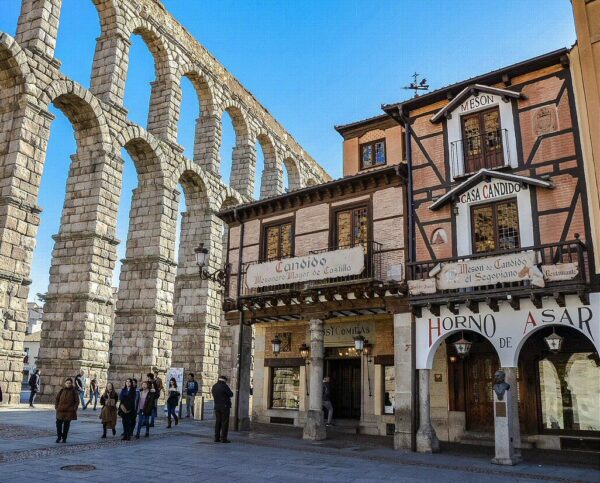
When was the Segovia Aqueduct built?
Not exactly known when it was built el Roman aqueduct of Segovia, if in the first century at the time of the Favio, or later, in the Trajan.
At the time of the Roman occupation, the current Segovia It was a small fortification located halfway between important Roman enclaves such as present-day Zaragoza and Mérida.
What water supply capacity does the Segovia Aqueduct have?
It is also surprising to know that at that time barely a hundred people lived in this fortification, when the aqueduct has the capacity to supply water to around 20.000 people.
How long is the Segovia Aqueduct?
Although we all have the typical majestic image of the aqueduct at the entrance to the historic center of Segovia, in reality this incredible work of engineering has a length of 17 kilometers.

The aqueduct begins in the Sierra, in the so-called Fuenfría spring.
From there it reaches the segovia city to finally end at the rocky promontory where the Alcazar.
For the water to flow, the aqueduct has a slope of 1%.
How many arches does the Segovia Aqueduct have?
The area of the aqueduct that makes up the typical image of Segovia is formed by 119 arcs, of which 44 are double arches, that is, with 88 arches.
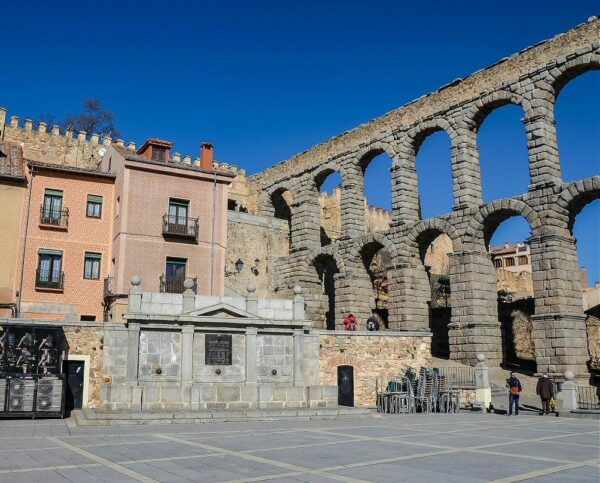
How tall is the Segovia Aqueduct?
The latter is the highest area of the Roman aqueduct, reaching Meters 28.
In the year 1072, during a Muslim attack, 36 arches of the aqueduct suffered deterioration, being restored in the XNUMXth century, at the time of the Catholic kings.
He was a monk from nearby parral monastery the one who carried out the restoration.
When you look closely at this imposing roman monument, you discover that in the area with the highest arches two niches open up, one on each side of the aqueduct.
Currently, in these spaces there are images of the Virgin of the Fuencisla and San Sebastián.

How to fly in a balloon in Segovia
A very special way to visit this Castilian city and live a great experience that you will remember all your life, it is fly in a balloon in Segovia, a three-hour activity in which you will make a one-hour flight, and for which you will have to get up early, which is very worth it
ORGANIZE your TRIP
- Don't forget your TRAVEL INSURANCE with a 5% discount
- Book the HOTEL for your trip
- RENT a CAR for your trip
- The best TOURS and EXCURSIONS in Spanish
- NO-LINE TICKETS for museums and monuments
- Best FREE TOURS around the world
- Book your TRANSFER from the airport
- eSIM card with INTERNET at the best price
Now just to see the aqueduct justifies a excursion to Segovia, where you can also see other monuments such as the Alcazar, cathedral or the aforementioned parral monastery, in addition to walking through its medieval streets.
Photos of the Segovia Aqueduct
Here you can see the best photos of the Segovia Aqueduct.


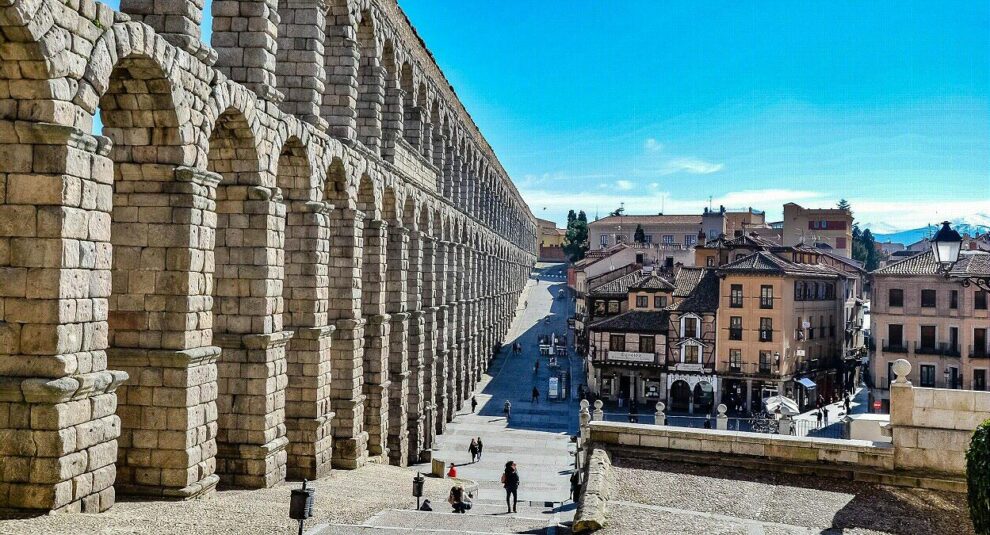

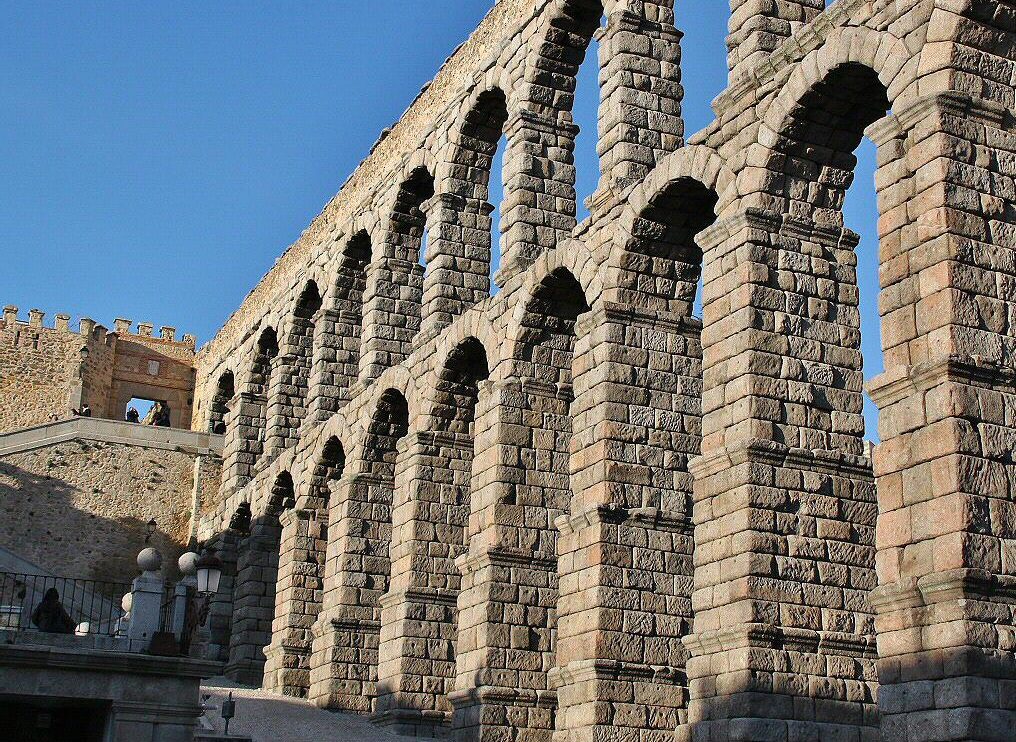
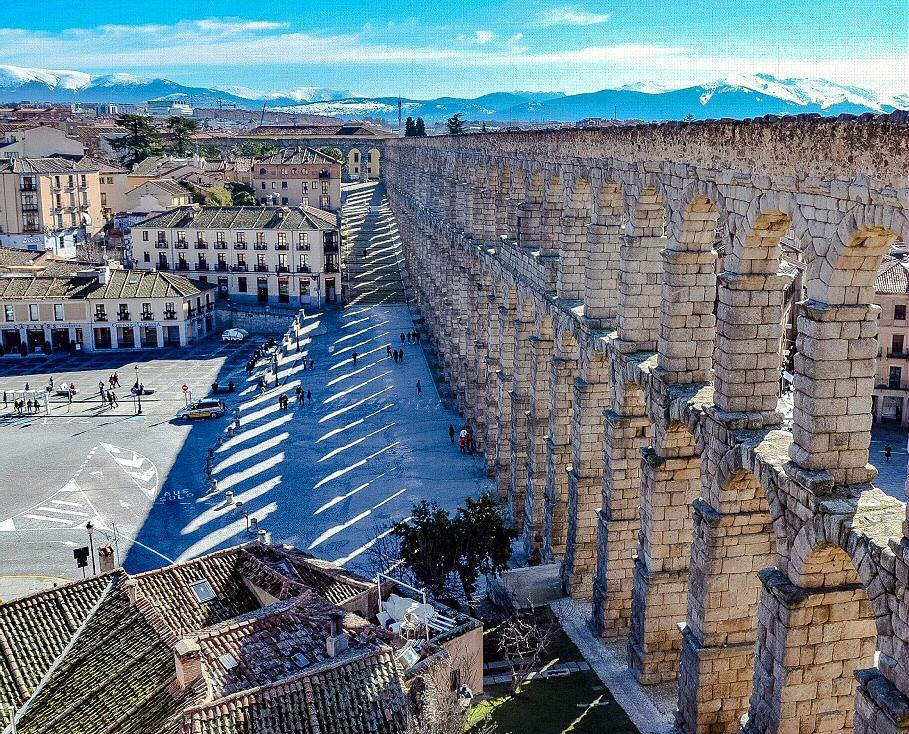
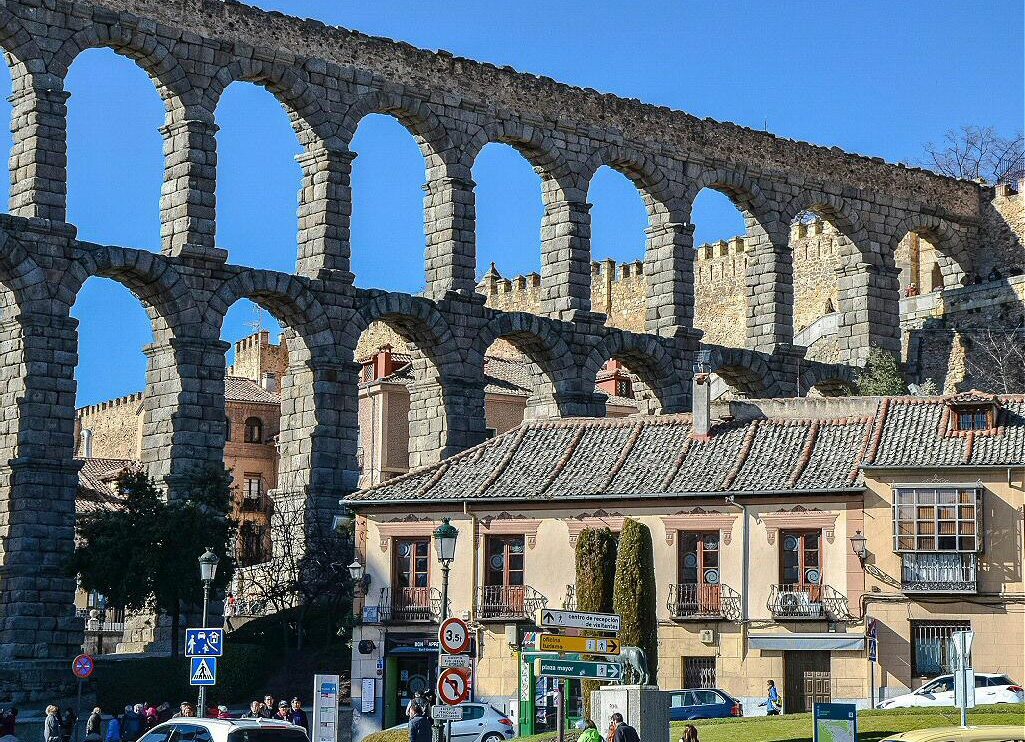
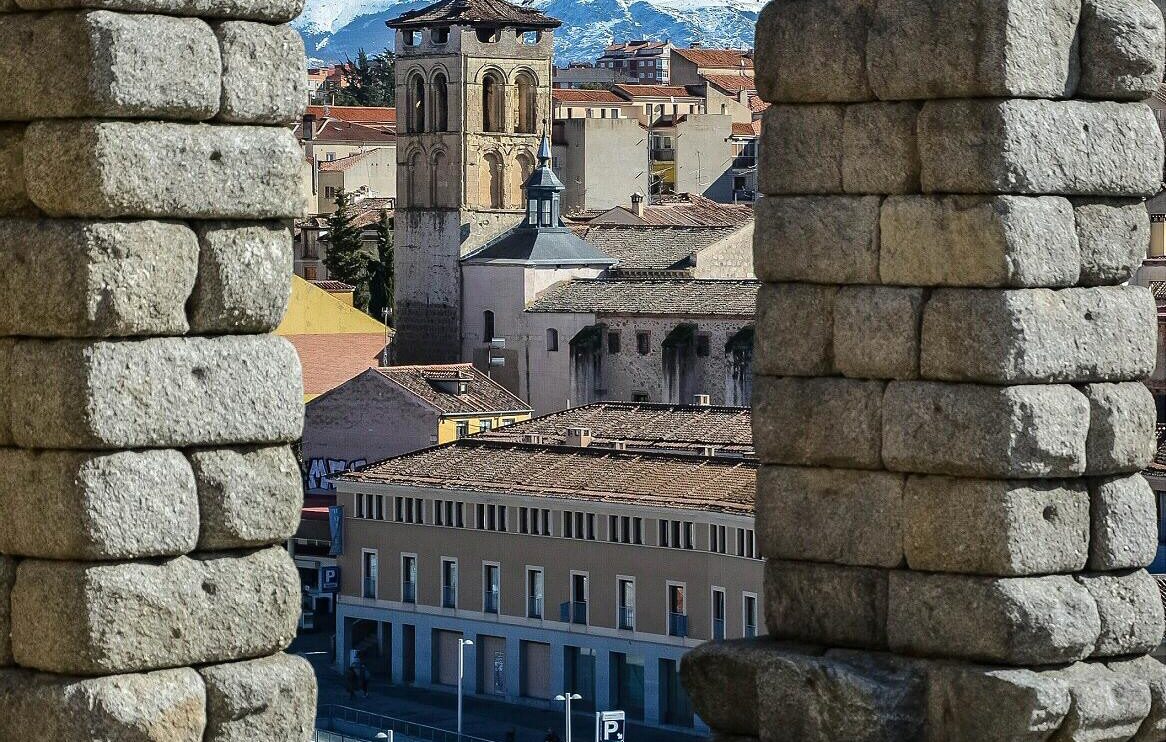
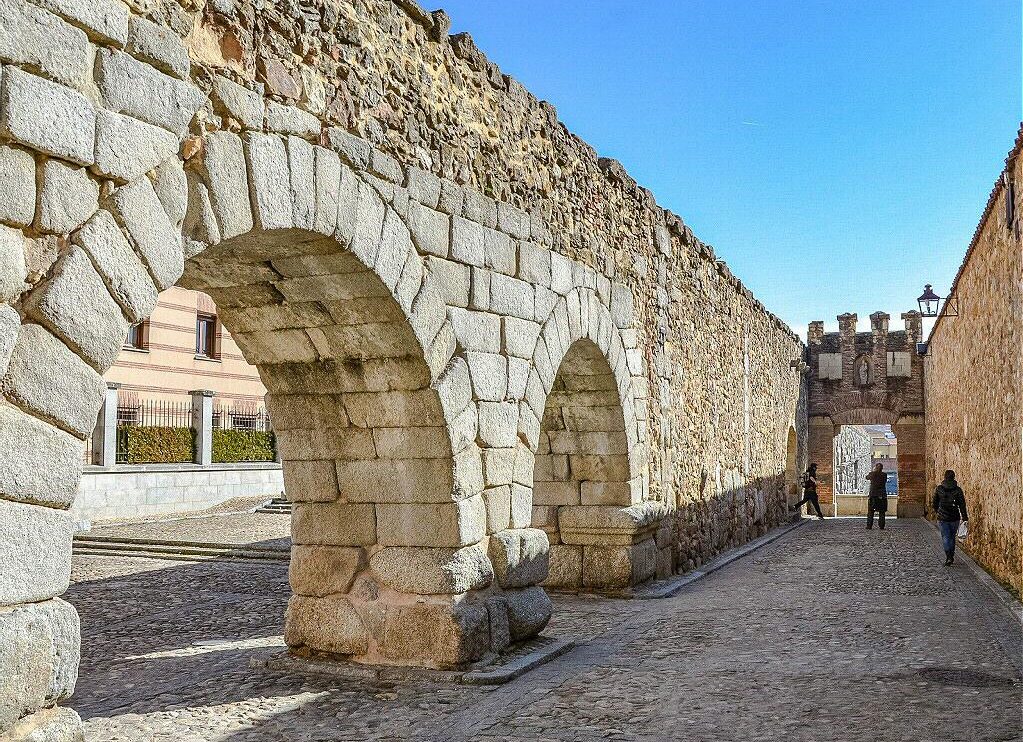
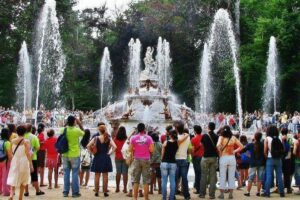
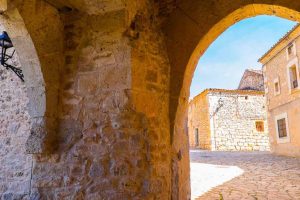
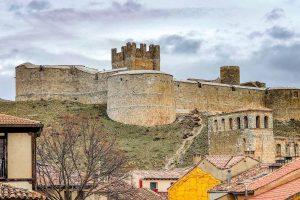











Stones are not held together by simple balance. Between ashlar and ashlar there is a bronze piece in the shape of an “axe” and grooves were carved in each ashlar in that shape: the ashlars remain in place because these pieces give internal solidity to the work in its vertical development.
Xus, thank you for your very interesting contribution 🙂
Hello!!! I loved Segovia, I share the post I made about this beautiful place…! I hope more travelers write and show images of this beautiful city.
I follow them on face..! greetings
http://enalgunlugar22.blogspot.com.ar/2014/05/segovia.html